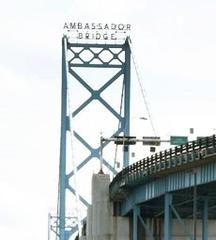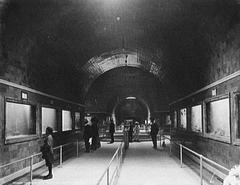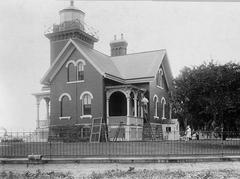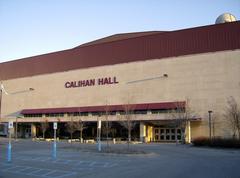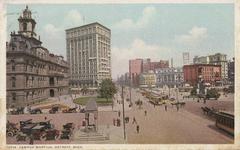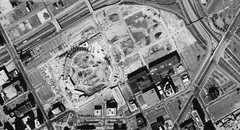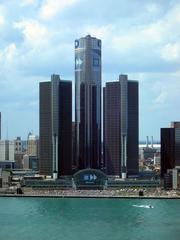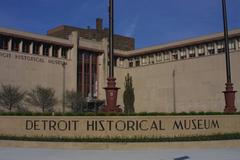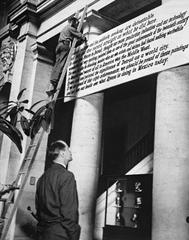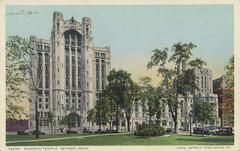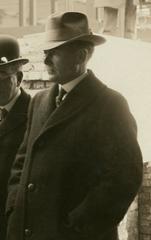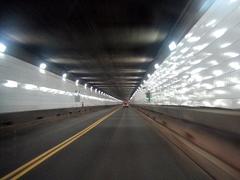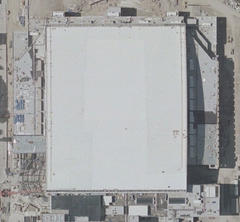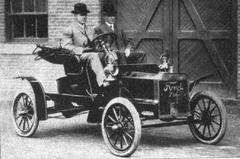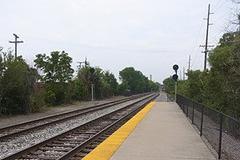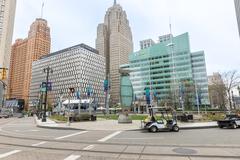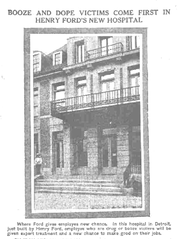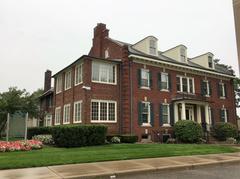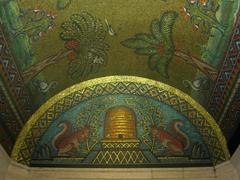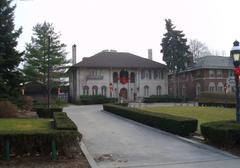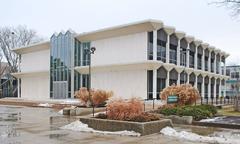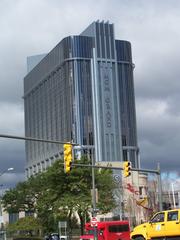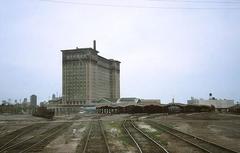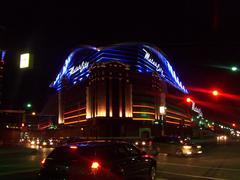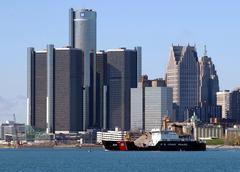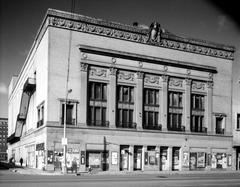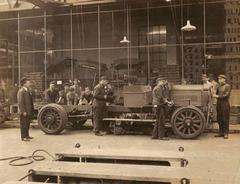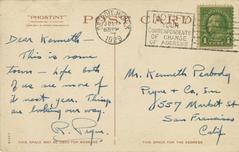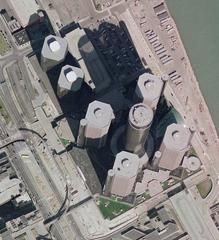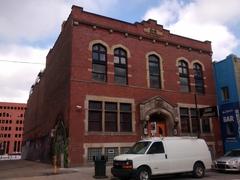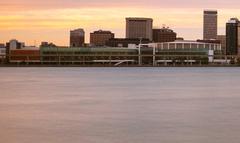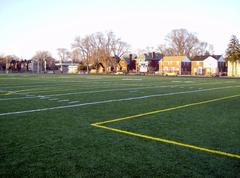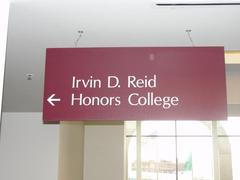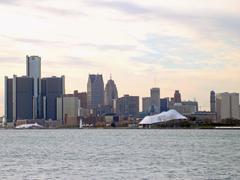Ste. Anne de Detroit Catholic Church: Visiting Hours, Tickets, and Detroit Historical Sites Guide
Date: 15/06/2025
Introduction
Ste. Anne de Detroit Catholic Church is a cornerstone of Detroit’s heritage, representing more than three centuries of faith, resilience, and community. Established in 1701, just days after Detroit’s founding by Antoine de la Mothe Cadillac, Ste. Anne is Michigan’s oldest continuous Roman Catholic parish and the second oldest in the United States (Detroit Historical Society; ste-anne.org). This basilica not only embodies Detroit’s French colonial roots but also celebrates its diverse, multicultural evolution, serving as a spiritual and cultural hub for residents and visitors alike.
This comprehensive guide covers Ste. Anne’s rich history, architectural highlights, visitor information—including hours and ticketing—accessibility, and practical travel tips, ensuring you make the most of your visit to one of Detroit’s most treasured landmarks.
Table of Contents
- Historical Overview
- Cultural and Religious Significance
- Visitor Information
- Community Role and Urban Revitalization
- Architecture and Artistic Features
- Special Events and Pilgrimage
- Frequently Asked Questions (FAQ)
- Nearby Attractions
- Conclusion
- References
Historical Overview
Founding and Early History
Ste. Anne de Detroit was founded on July 26, 1701, two days after Detroit’s establishment. The original log chapel, dedicated to Ste. Anne, patroness of New France, marked the city’s religious beginnings and symbolized the aspirations of its French settlers (Detroit Historical Society; SAH Archipedia). The parish’s records, dating to 1704, are the earliest in Michigan and among the oldest in the U.S., offering valuable insight into Detroit’s colonial era (historicdetroit.org).
Architectural Evolution
From its humble beginnings, Ste. Anne has been rebuilt eight times, each structure reflecting Detroit’s growth and the congregation’s perseverance through fires and upheaval (SAH Archipedia). The current church, completed in 1886 and consecrated in 1887, is a masterwork of High Victorian Gothic architecture, designed by Albert E. French and Leon Coquard (ste-anne.org; Archdiocese of Detroit). Its red brick façade, twin spires, flying buttresses, and rose window evoke the grandeur of medieval cathedrals.
The church complex includes a school, convent, and parish hall, emphasizing its longstanding community role.
Cultural and Religious Significance
Ste. Anne de Detroit has remained a spiritual anchor for Detroit’s Catholic community for over three centuries, serving successive waves of French, Irish, Polish, Hispanic, and other immigrant communities (Detroit Catholic; thefrancophone.com). The church offers Masses in English and Spanish and hosts annual multicultural celebrations, such as the July Novena to St. Anne (Detroit Catholic).
A key figure in the church’s history is Father Gabriel Richard, whose leadership helped shape Detroit’s educational and civic landscape. His tomb is a prominent feature within the church (ste-anne.org; theclio.com).
In 2020, Pope Francis designated Ste. Anne a minor basilica, one of only three in Michigan, affirming its historical and spiritual importance (Archdiocese of Detroit).
Visitor Information
Location
1000 St. Anne Street, Detroit, MI 48216—just west of downtown, near the Ambassador Bridge. The neighborhood’s French street names and multicultural atmosphere enhance the visit (visitdetroit.com; thefrancophone.com).
Visiting Hours
- Monday – Saturday: 9:00 AM – 5:00 PM
- Sunday: 7:30 AM – 6:00 PM
Hours may vary during holidays or special events. Always check the official website or call ahead.
Admission and Tickets
- Admission: Free (donations welcomed)
- Tours: Docent-led tours and group visits are available by appointment (ste-anne.org). Advance booking is recommended for groups.
Accessibility
The basilica is wheelchair accessible, with ramps and accessible restrooms. Some areas may require assistance due to the building’s age.
Parking and Transportation
On-site and nearby street parking are available; parking can be limited during major events. Public transportation serves the area, and ride-sharing is an option.
Tips for Visitors
- Dress modestly and maintain a respectful demeanor, especially during services.
- Photography is permitted, but please avoid disrupting worship or other visitors.
- Check for special events, such as the annual Novena and Feast Day in July.
Community Role and Urban Revitalization
Ste. Anne de Detroit contributes to local revitalization, partnering with organizations like the Bagley Housing Association to support housing and social services in the neighborhood (SAH Archipedia). The church serves as both a spiritual center and a catalyst for community development.
Architecture and Artistic Features
The basilica’s High Victorian Gothic architecture includes:
- Twin Spires and Flying Buttresses: Creating a dramatic silhouette.
- Rose Window: The oldest stained glass in Detroit, including a Star of David motif (catholicshrinebasilica.com).
- Sanctuary and Altars: Intricate woodwork, side altars, and a thirty-five-foot high altar.
- Historic Relics: Incorporates elements from earlier churches, like the 1818 cornerstone and Beaubien Bell (historicdetroit.org).
- Father Gabriel Richard’s Tomb: Located within the church, honoring his legacy.
The sanctuary’s light-filled space, vibrant stained glass, and carved furnishings create a contemplative and inspiring atmosphere.
Special Events and Pilgrimage
Ste. Anne is recognized as a pilgrimage site for the Jubilee Year 2025 (Detroit Catholic). Its annual Novena and Feast Day in July draw thousands for multicultural liturgies and community celebrations. The basilica also hosts concerts, educational tours, and heritage events year-round.
A major restoration, launched in 2025, is investing $30 million in preserving and enhancing the church’s structure and art, with an additional $20 million endowment for ongoing care (Archdiocese of Detroit).
Frequently Asked Questions (FAQ)
Q: What are the visiting hours for Ste. Anne de Detroit?
A: Monday–Saturday 9:00 AM–5:00 PM, Sunday 7:30 AM–6:00 PM. Check the official website for updates.
Q: Is there an admission fee?
A: No, admission is free. Donations are appreciated.
Q: Are guided tours available?
A: Yes, by appointment. Contact the parish office or check the website.
Q: Is the church wheelchair accessible?
A: Yes, with ramps and accessible restrooms. Some areas may require assistance.
Q: Can I attend Mass?
A: Yes, Mass is offered in English and Spanish; schedules are on the parish website.
Q: Where can I park?
A: On-site and street parking are available, but may be limited during events.
Q: What else is nearby?
A: Detroit Riverwalk, Ambassador Bridge, Corktown, and the Detroit Historical Museum are all nearby.
Nearby Attractions
- Detroit Riverwalk: Scenic views of the river and city.
- Ambassador Bridge: Iconic link to Windsor, Canada.
- Corktown: Historic neighborhood with dining and nightlife.
- Detroit Historical Museum: In-depth look at the city’s past.
Conclusion
Ste. Anne de Detroit Catholic Church is more than a historic building—it’s a living testament to Detroit’s origins, architectural beauty, and vibrant multicultural community. From its founding in 1701 through fires, relocations, and periods of renewal, Ste. Anne has been at the center of Detroit’s faith and identity. Whether you’re drawn by history, art, spirituality, or community, a visit to Ste. Anne promises an enriching experience.
Plan your visit by confirming hours and tours on the official website, and consider downloading the Audiala app for guided audio tours and updates on Detroit’s historic sites. Let Ste. Anne de Detroit be your gateway to the city’s remarkable past and dynamic present.
References
- Detroit Historical Society
- ste-anne.org
- SAH Archipedia
- Detroit Catholic
- Archdiocese of Detroit
- Catholic Foundation Michigan
- historicdetroit.org
- thefrancophone.com
- onlyinyourstate.com
- catholicshrinebasilica.com
- visitdetroit.com
- theclio.com
